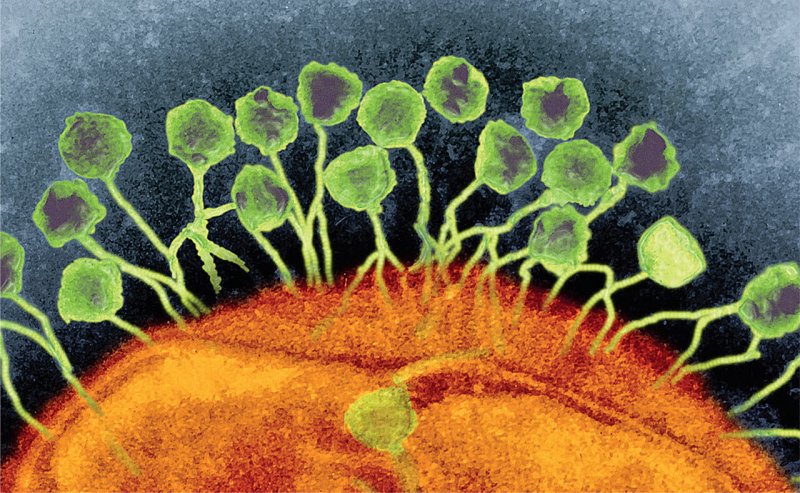Bacteria and phages are likely locked in an arms race. The former evolve new kinds of scissor enzymes, and the latter evolve new ways of disabling them. Intrigued, [researcher Joseph] Bondy-Denomy started searching for more CRISPR-resistant phages.
…
Unusually large for a virus, phiKZ typically infects a bacterium called Pseudomonas aeruginosa. Unsurprisingly, it could resist the version of CRISPR used by its host. Unexpectedly, it also resisted every other version of CRISPR that the team tried, including those from bacteria that it would never have naturally encountered. Its armor seemed to work against every possible weapon.
…
[The virus] encapsulates its DNA inside a shell of protein, which it suspends inside itself with thin filaments. That’s exceptionally odd.…
CRISPR can’t destroy what it can’t reach, and the shell stops it from getting at the phage’s DNA. The phiKZ phage and its relatives don’t need to evolve countermeasures against each and every form of CRISPR when they have ways of excluding them all.
…
Finding new forms of CRISPR, or new defenses against it, could lead to ways of controlling gene-editing technologies more carefully or efficiently.
Read full, original post: The Startling Secret of an Invincible Virus































